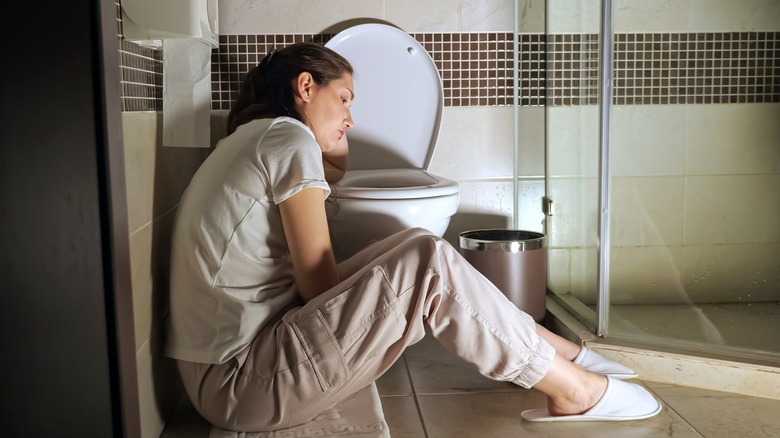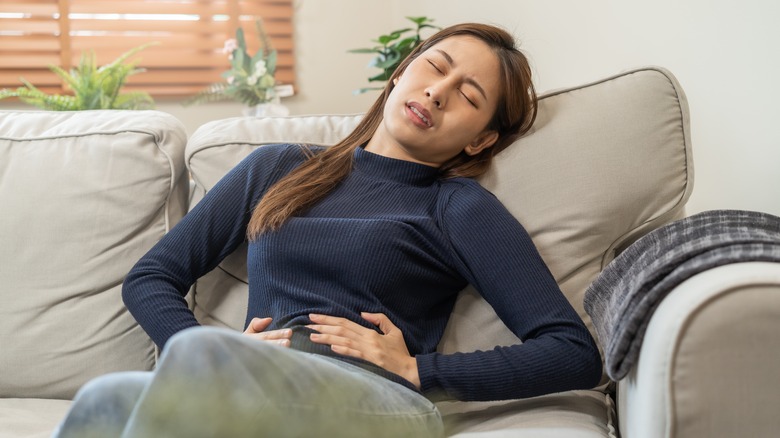Does Constipation Cause Overactive Bladder?
Overactive bladder (OAB) is a common condition that causes a strong, sudden urge to urinate. The Cleveland Clinic estimates that more than 33 million men and women in the U.S. are living with this condition. Pregnancy, weight gain, nerve damage, infections, and some medications can all contribute to OAB. Many sufferers also experience bladder incontinence and have difficulty sleeping because they need to get up to use the restroom.
The bladder can hold about two cups of urine, says the National Association for Continence. When it gets about half full, it signals your brain to give you the urge to pee. But if you have an overactive bladder, this system fails to work properly, which can lead to involuntary urine loss, or incontinence. You may also feel the need to urinate more often than usual, even when your bladder isn't full.
Most people have to pee six to eight times per day, according to the National Health System (NHS) — though these figures may vary from one person to another. With OAB, you may feel the urge to pass urine as many as 30 times a day (per Urology Associates)!
Certain factors, including your bowel habits, can contribute to this problem, explains the Bladder and Bowel Community. Therefore, constipation and other digestive disorders may affect bladder function and worsen your symptoms.
The unexpected link between constipation and overactive bladder
As mentioned earlier, an overactive bladder can have various causes, from pregnancy and obesity to certain disorders. Another risk factor is chronic constipation, notes a 2012 article published in the journal Australian Family Physician. A 2018 study conducted on 516 women found that constipation was commonly associated with OAB, especially in those of a younger age, reports Arquivos de Gastroenterologia. Not surprisingly, women with OAD and constipation had a poorer quality of life than those suffering from OAD alone.
Another study, which appeared in the Journal of Urology in 2013, reported similar findings in men. Male patients having three or fewer bowel movements per week were more likely to experience several lower urinary tract symptoms, including those associated with OAB, than those having three to 10 bowel movements per week. This association was previously observed in children and older adults.
Stool buildup in the bowels can put pressure on the bladder, causing the urge to pee, according to the Bladder and Bowel Community. What's more, constipation may worsen urinary incontinence. Similarly, irritable bowel syndrome, a common cause of constipation, might contribute to overactive bladder, too, reports a large-scale study featured in the journal BJU International.
What can you do about it?
Overactive bladder is a chronic condition, according to a 2018 review published in Current Urology, and therefore, you cannot completely cure it by merely treating constipation. However, having regular bowel movements may ease its symptoms and improve your quality of life.
For starters, fill up on fruits, leafy greens, legumes, whole grains, and other high-fiber foods, suggests the Bladder and Bowel Community. Psyllium husk, dried plums, and kiwi can help with constipation, too, reports a recent study presented in the American Journal of Gastroenterology. These foods are chock-full of fiber and may reduce straining while improving stool consistency.
Note that stress may worsen constipation, so try to make more time for yourself and avoid situations that can take a toll on your mood. "Your gastrointestinal tract has many nerves and is a nervous system organ, much like the brain," gastroenterologist Dr. Kyle Staller told SELF. "The brain can impact what's going on in the gastrointestinal tract, and vice versa," he added.
Alternatively, ask a biofeedback specialist to show you how to control your pelvic floor muscles. Stanford Medicine says this practice may improve constipation symptoms, but it can also benefit those with an overactive bladder. In one study, women who received biofeedback training had a significant reduction in OAB episodes after just three months of treatment, notes WebMD. Over time, this form of therapy can strengthen the pelvic floor and relieve urinary incontinence, according to UCSF Health.



